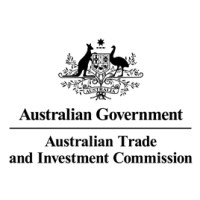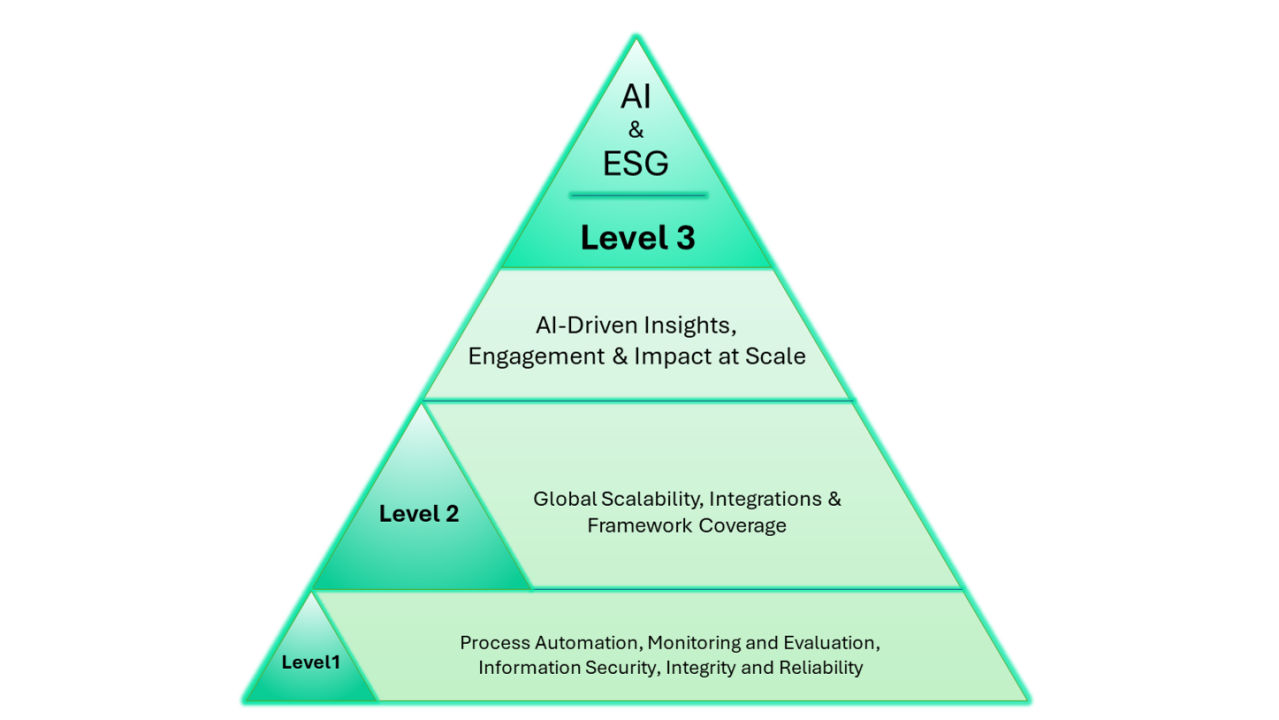Local Government Group Benchmarking Analysis – CY 2021
With local governments under increasing pressure to meet carbon neutrality targets, understanding your energy consumption and emissions is more critical than ever. Trellis' recent benchmarking study of South Australian LGAs highlights key challenges: varying emissions intensity, resource cost disparities, and the need for better standardisation. Tackling these issues head-on is where real progress is made.
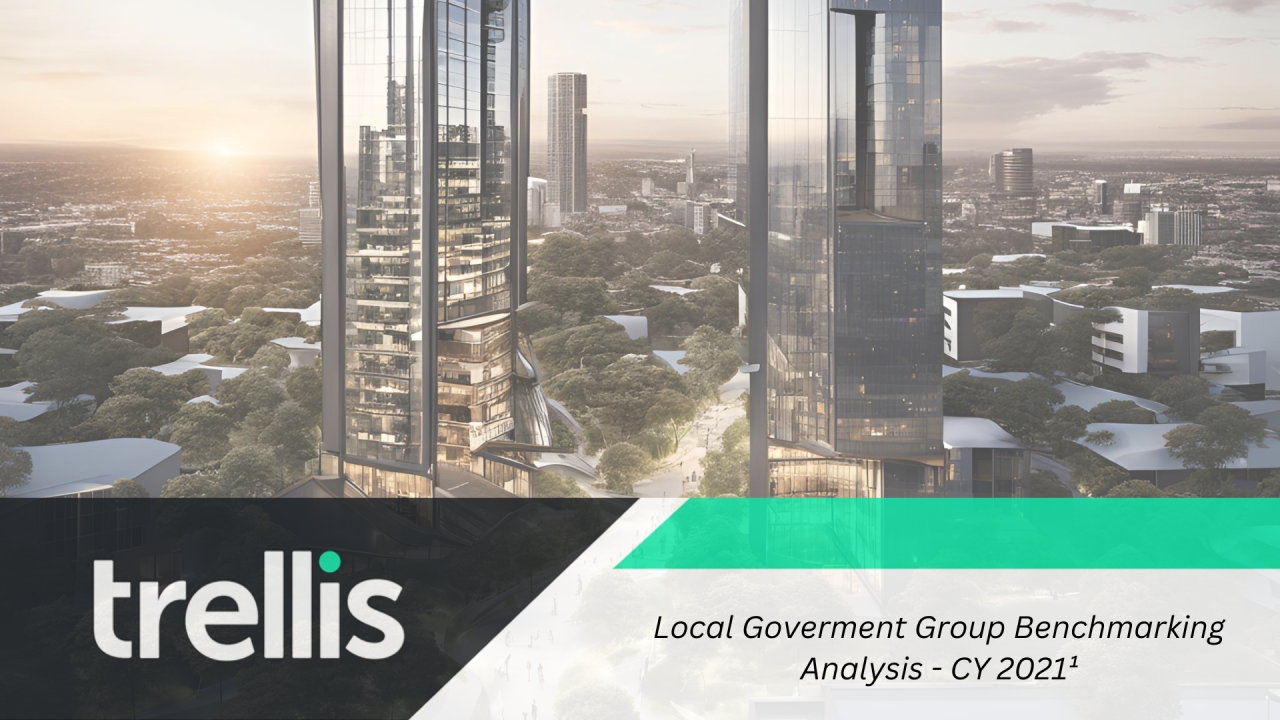
Integrate your CRM with other tools
Lorem ipsum dolor sit amet, consectetur adipiscing elit lobortis arcu enim urna adipiscing praesent velit viverra sit semper lorem eu cursus vel hendrerit elementum morbi curabitur etiam nibh justo, lorem aliquet donec sed sit mi dignissim at ante massa mattis.
- Neque sodales ut etiam sit amet nisl purus non tellus orci ac auctor
- Adipiscing elit ut aliquam purus sit amet viverra suspendisse potenti
- Mauris commodo quis imperdiet massa tincidunt nunc pulvinar
- Adipiscing elit ut aliquam purus sit amet viverra suspendisse potenti
How to connect your integrations to your CRM platform?
Vitae congue eu consequat ac felis placerat vestibulum lectus mauris ultrices cursus sit amet dictum sit amet justo donec enim diam porttitor lacus luctus accumsan tortor posuere praesent tristique magna sit amet purus gravida quis blandit turpis.

Techbit is the next-gen CRM platform designed for modern sales teams
At risus viverra adipiscing at in tellus integer feugiat nisl pretium fusce id velit ut tortor sagittis orci a scelerisque purus semper eget at lectus urna duis convallis. porta nibh venenatis cras sed felis eget neque laoreet suspendisse interdum consectetur libero id faucibus nisl donec pretium vulputate sapien nec sagittis aliquam nunc lobortis mattis aliquam faucibus purus in.
- Neque sodales ut etiam sit amet nisl purus non tellus orci ac auctor
- Adipiscing elit ut aliquam purus sit amet viverra suspendisse potenti venenatis
- Mauris commodo quis imperdiet massa at in tincidunt nunc pulvinar
- Adipiscing elit ut aliquam purus sit amet viverra suspendisse potenti consectetur
Why using the right CRM can make your team close more sales?
Nisi quis eleifend quam adipiscing vitae aliquet bibendum enim facilisis gravida neque. Velit euismod in pellentesque massa placerat volutpat lacus laoreet non curabitur gravida odio aenean sed adipiscing diam donec adipiscing tristique risus. amet est placerat.
“Nisi quis eleifend quam adipiscing vitae aliquet bibendum enim facilisis gravida neque velit euismod in pellentesque massa placerat.”
What other features would you like to see in our product?
Eget lorem dolor sed viverra ipsum nunc aliquet bibendum felis donec et odio pellentesque diam volutpat commodo sed egestas aliquam sem fringilla ut morbi tincidunt augue interdum velit euismod eu tincidunt tortor aliquam nulla facilisi aenean sed adipiscing diam donec adipiscing ut lectus arcu bibendum at varius vel pharetra nibh venenatis cras sed felis eget.
In 2022 Trellis conducted a benchmarking study for Local Government Authorities (LGAs) within South Australia. Commissioned by Green Industries South Australia (GISA) Trellis was tasked with quantifying energy consumption, usage, carbon emissions (Scope 1-3), cost analysis, and providing visibility to a previously decentralised network of LGAs. Headquartered in South Australia, Trellis supports a substantial number of Local Governments across Australia and was well positioned to oversee this sectoral study.
12 South Australian LGAs, encompassing half of the State's population, consented to an anonymised analysis of their greenhouse gas emission management strategies, projects, investments, data, and overall progress toward carbon neutrality.

Among the participating councils 6 had publicly committed to addressing climate change, while 3 had set carbon neutrality targets. 8 of the councils had set specific net-zero targets, many of them aligned on 2030 targets, with others ranging from 2024 to 2050. From our findings, 2030 remains a popular target for LGAs nationally based on our ongoing relationships to the sector.
Key challenges for LGAs seeking to reach net zero were:
1. Alignment with national standards (NGER and Climate Active most commonly) pertaining to LGAs.
2. Emission intensity increases for LGAs as they move from Urban to Regional, highlighting inequality in decarbonisation difficulty.
3. Resource usage and the associated cost and emissions.
Alignment with national standards (Key Challenge 1.0)
The local government’s decarbonisation journey required the collation of a comprehensive array of scattered data sources. Tackling investment and broader risk is an extremely manual data collection process. LGAs abide by different emissions frameworks, creating inconsistencies in carbon emissions calculations, elongating the effort across regions. Alongside the disparities in decarbonisation difficulty targets are far easier to set than to achieve. Missing targets or aligning to a different framework poses additional reputational risk from the respective LGAs, providing exposure to potential greenwashing claims that can undermine public trust and ongoing support for climate change initiatives.
Assessment of emissions intensity (Key Challenge 2.0)
Peri-urban and urban LGAs illustrated substantially lower emissions intensity than their regional council counterparts. Comprehensive analyses against the framework included quantitative data sources across – electricity (location and market-based), fuels (ULP, Diesel, Ethanol across transport and stationary uses), natural gas (LNG), and water (H20). Socio-economic and contextual metrics were also included within this project to benchmark data – level of urbanisation, distance (Kms) from CBD, average resident income, population density, area (location), volume of rateable properties, and gross locale revenue.
Resource usage and associated cost of emissions (Key Challenge 3.0)
Trellis found across the State and that a comparable suite of requisite services existed between regional and urban centres. These base levels of facilities were maintained irrespective of the broader socio-economic considerations; Urbanisation levels, average resident income, and rate revenue.
LGAs still had not had their ‘a-ha’ moment in realising reduction initiatives due to disparity and volume of public, general, and community support services (civic centres, aged care, fleet-owned vehicles, depot’s, public education – primary, secondary, and tertiary). With continual challenges across their ability to efficiently measure, benchmark, forecast, model, and execute emission reduction strategies carbon neutrality commitments were greatly varied.
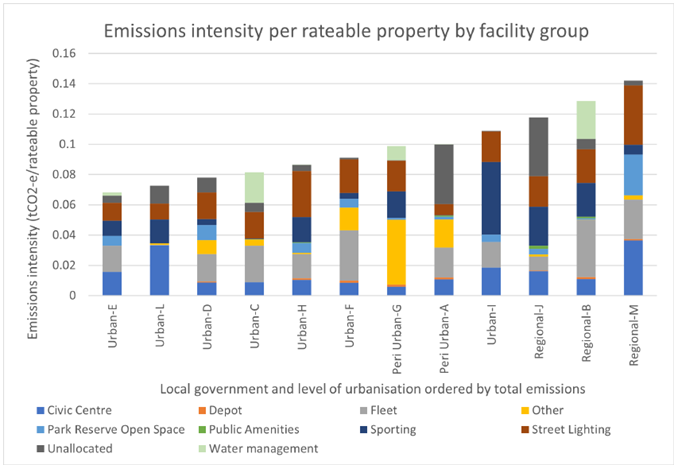
Trellis’s Sustainability Team evaluated the Total Effective Unit Cost (TEUC) across resource type, respective usage (consumption), and gross expenditure (costs). Providing visibility across the total cost of delivery divided by total consumption in Figure 3.

In Figure 4, Trellis determined central tendency across each individual resource type, utilising a power curve trend-line to derive effective unit cost against total consumption.

Various councils incurred greater costs in comparison to one another for each individual resource based upon varied and aforementioned factors. If EAC exceeded the trend-line, total cost per council was significantly greater than their respective counterparts for each specific resource at its level of consumption.
LGAs performing well for one resource did not necessarily correlate with other resources, and all participants would benefit from additional investigation of resource consumption and expenditure.
From this study, Trellis recommended that LGAs:
- Liaise with their States Local Government Association to determine a level of standardisation across their carbon neutrality actions, strategy, and broader goals.
- Review their individual procurement process of resource efficiency and age of infrastructure.
- Enhance cross-functional collaboration across facility/asset management, environmental management, and financial business units.
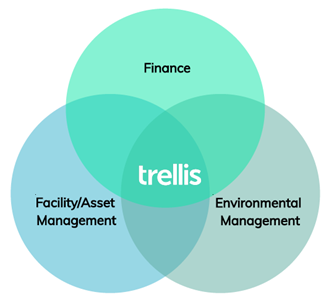
Since our study, Trellis has seen:
- State Associations across South Australia incorporate mutual action plans to help facilitate LGAs begin their emissions reduction journeys, namely regional LGAs.
- LGA’s moving towards consistency across emissions management and reporting (namely in alignment with Climate Active).
- Greater collaboration across LGAs, resulting in healthy competition with their LGA counterparts.
- Increased LGA confidence, enhanced operational efficiency, and greater investment in utility oversight.
Check out the original article on the Green Industries SA website here
If you are interested in understanding where your organisation is with respect to carbon emissions management, energy consumption, and cost optimisation then please contact the Trellis team.

